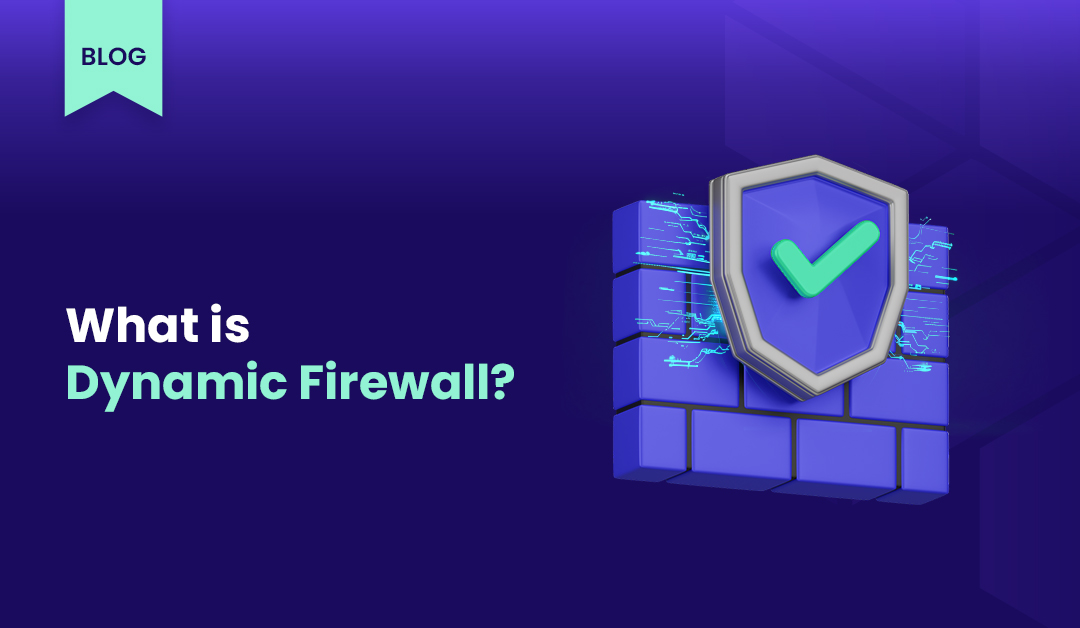What is Dynamic Firewall?
In the ever-evolving landscape of digital security, the Dynamic Firewall stands as a vanguard, offering robust protection to businesses operating in cyberspace. Sometimes referred to as Adaptive Cloud Firewall, this advanced tool manages and filters the flow of information between external domains and internal systems, providing unparalleled security in an increasingly vulnerable digital world. Understanding Dynamic Firewalls Dynamic […]
Author
Date
Category
All Categories
- AI-powered security
- Attacks & Threats
- Cybersecurity
- Hybrid Cloud
- Network
- Network Firewall
- Network Protection
- News
- Remote Workforce
- Security
- Zero Trust
Contents
Popular Posts
Product
Join the Newsletter

In the ever-evolving landscape of digital security, the Dynamic Firewall stands as a vanguard, offering robust protection to businesses operating in cyberspace. Sometimes referred to as Adaptive Cloud Firewall, this advanced tool manages and filters the flow of information between external domains and internal systems, providing unparalleled security in an increasingly vulnerable digital world.
Understanding Dynamic Firewalls
Dynamic Firewalls, unlike conventional firewalls, do not exist in a physical location. Instead, they form an invisible wall around cloud-based applications and databases, ensuring airtight security for businesses operating online. They make use of multiple data sources to identify and fend off a wide range of attacks.
These firewalls draw on a database of known threats, a collective intelligence shared by all users. They also analyze past in-house activities and problems to predict potential future threats. This combination of shared intelligence and data analysis allows dynamic firewalls to identify the newest malware and zero-day threats, ensuring your data remains secure from malicious actors.
Core Principles and Operation
Dynamic firewalls operate on the principle of adaptive security, adjusting their protective measures in real-time based on the current threat landscape. Unlike traditional firewalls, where data enters through a single point, is filtered, and then disseminated to the appropriate ports, dynamic firewalls perform this filtering at the cloud level.
This type of firewall operates in a dispersed manner, with elements of the system spread across different locations. However, the basic principles remain the same as with traditional firewalls – intercepting potentially harmful traffic before it reaches the system.
Dynamic firewalls take advantage of cloud-delivered firewalls’ infinite scalability, allowing them to handle high volumes of long-lived connections without compromising performance. They also allow for the prioritization of business-critical applications, contributing to a better user experience and cost reduction.
Advantages of Dynamic Firewalls
One of the main advantages of dynamic firewalls is their ability to adapt and evolve with the speed of threat evolution. As cloud software is constantly updating and linked to the latest information, businesses using dynamic firewalls benefit from up-to-the-minute data on the most recent attacks.
Another advantage of dynamic firewalls is their ability to scale easily to meet the needs of growing businesses. This scalability extends not only to the size of the business but also to the array of cloud-based tools it uses. With dynamic firewalls, businesses can construct a cloud strategy tailored to their specifications, rather than having to work around the limitations of the firewall.
Terms Associated with Dynamic Firewalls
There are several terms that one might come across when dealing with dynamic firewalls. These include:
-
Firewall-as-a-Service (FWaaS): This term refers to the delivery of firewall capabilities directly from the cloud, eliminating the need for traditional on-premise firewalls.
-
Zero Trust Network Access (ZTNA): A security concept that requires verification for every person and device trying to access resources on a private network, regardless of whether they are sitting within or outside of the network perimeter.
-
Secure Access Service Edge (SASE): This is a framework that combines multiple security features into a single, cloud-native service. Dynamic firewalls often form part of this framework, providing network security solutions alongside other tools like CASB, SWG, and ZTNA.
Considerations in Choosing Dynamic Firewalls
When choosing a dynamic firewall for your business, there are several important factors to consider. The first is the speed and ease of deployment. Some platforms offer rapid deployment with simple auto-scaling, which can be a significant advantage.
Next, consider the flexibility of the firewall’s basic infrastructure. Your business is unique, and your cloud strategy should reflect that. A dynamic firewall that allows you to build a strategy tailored to your specifications will be more beneficial than one that forces you to work around its limitations.
Finally, consider the firewall’s intelligence capabilities. Does it draw from a database of known threats and analyze past in-house activities to predict future threats? Does it offer up-to-the-minute data on the latest attacks? A dynamic firewall that ticks all these boxes will provide your business with the best possible protection.
In conclusion, dynamic firewalls offer comprehensive security that adapts to the ever-evolving threat landscape, providing businesses with the protection they need to operate safely in the digital world. By choosing a dynamic firewall that meets their unique requirements, businesses can ensure they remain secure, compliant, and trustworthy in the eyes of their customers.
Get Started with Timus
Zero Trust. Adaptive Cloud Firewall. Secure Remote Access. In one.
